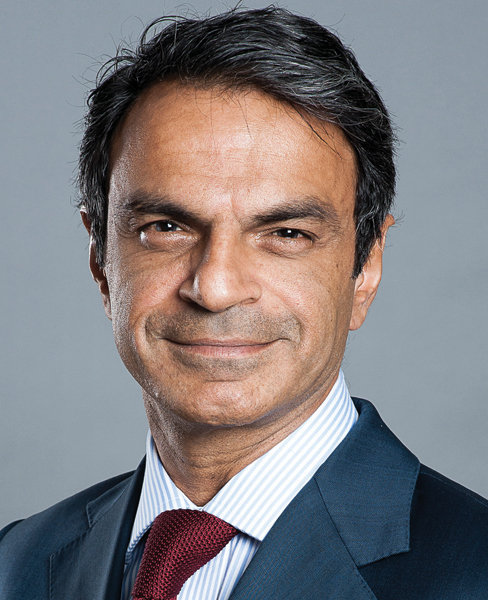Once upon a time communications were the preserve of state monopolies. Then came the first wave of liberalisation. The state monopolies were privatised and new entrants licensed to provide competitive offerings to enhance service quality and bring prices down. At least that was the theory and to some extent it worked. The incumbent operators fought off the new entrants by engaging in predictable obstructionist tactics, whilst the new entrants tried to piggy-back on the incumbent’s existing infrastructure with the help of regulations forcing the incumbent to open up its network. By and large however, the players were dealing with technologies and associated services which were broadly rooted in a linear two-way communication model, write Askandar Samad, a partner, and Roch Glowacki, a trainee solicitor, at law firm Reed Smith LLP.
That was then. The arrival of the internet and more recently cloud computing, which enables greater scalability, cost flexibility and agility, has generated a new breed of digitally native companies and over-the-top services (OTT). The explosion in cloud computing has also paved the way for a connectivity revolution whereby millions of devices embedded in both industrial and everyday objects are sending and receiving data, communicating with each other, over the internet, comprising the Internet of Things (IoT). The linear two-way communication model is becoming a thing of a past.
This puts communications service providers’ (CSPs) baseline under increasing pressure. On one side, over-the-top (OTT) players such as Skype, WhatsApp, Google Hangouts or Tencent’s WeChat are bypassing traditional distribution channels and eating into the conventional CSPs’ traditional sources of revenue by offering attractive communication services coupled with diversified ancillary add-ons, which often rely on content enhancement. On the other, as IoT becomes ingrained in everything we do, from manufacturing operations, freight monitoring, smart city planning, insurance telematics to entertainment services, networks will experience incredible surges in data traffic. According to Gartner, there will be 8.4 billion connected devices in the IoT by the end of 2017 and this will reach 21 billion by 2020. The transformation to a fully connected world will force telcos to reevaluate how the infrastructure supporting these devices can overcome service delivery and customer expectation challenges.
Connecting the largest number of devices will not be enough to cement your market position. While the burgeoning IoT market provides CSPs with an opportunity to grow by taking on new roles in vertical markets, companies in this field usually lack the capabilities to create offerings that would enable them to reinvent themselves. Therefore, many will have to consolidate, pursue so-called ‘acqui-hiring’ strategies, talent acquisition in adjacent markets and/or pick the right partners to collaborate with.
While AT&T is seeking to complement its distribution network with Time Warner’s storehouse of content, Verizon’s past purchases of AOL and Fleetmatics (which provides GPS tracking solutions) were about getting a foothold in the digital environment and accelerating the company’s position in the provision of mobile workforce management solutions. Other examples include Cisco’s purchase of Jasper, a cloud-based software platform, Intel’s acquisition of Israeli autonomous vehicle technology firm, Mobileye, or Nokia’s bet on Whithings, a provider of digital health products. However, it was SoftBank’s £24.3bn takeover of the largest UK tech firm, ARM Holdings (a British chip maker), which signaled that CSPs are no longer marginal players in IoT investment and instead, a force to be reckoned with. Strategic partnerships are also on the rise. For example, the new deal between Orange and China Telecom will enable multinational customers to deploy their IoT solutions across the two operators’ networks.
As investments in future network technology drive profits down, CSPs will necessarily have to change the way they deliver their services. Time-division multiplexing (TDM), which has been the backbone of the CSPs’ technology base, will give way to Voice over Internet Protocol (VoIP). VoIP offers affordable scalability, low cost calling and add-on features which TDM cannot compete with. The carriers will have no incentive to maintain two networks that perform the same function, especially since VoIP systems are more cost-effective. They render much of the stationary equipment redundant and do not add to the costs of transmission as everyone is already paying for the internet.
The transition from TDM to an IP-based environment is therefore inevitable and, when it happens, telcos and cloud-based companies will become indistinguishable. The proliferation of billions of connected programmable devices means that the Internet increasingly envelopes the physical world. This requires a re-think of the existing infrastructure and business models. The question is whether the connectivity revolution that is currently re-shaping the market will, at some point, fully displace the incumbent operators. The new wave of disruption is already forcing CSPs to forge new partnerships and amass the right talent to defend their position. But will they truly abandon their linear communications history and reinvent themselves as big players in the IoT space? The jury is still out.






